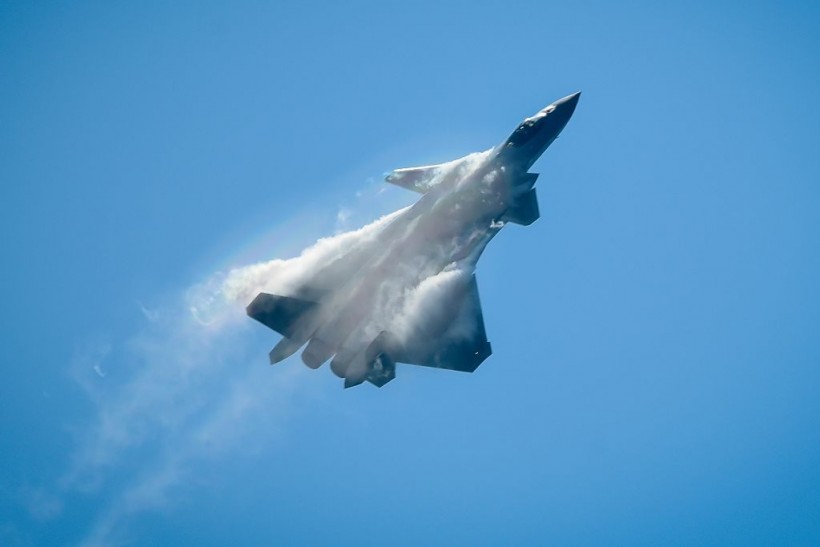
(Photo : WANG ZHAO/AFP via Getty Images)
Chengdu J-20 Mighty Dragon is the answer of the Chinese PLAAF to the US F-35 and F-22, which is becoming a better rival.
The impact of the Chengdu J-20 Mighty Dragon, a fifth Generation Stealth Fighter, can no longer be disregarded as China fielding them in numbers is serious. Even though the F-35 Lightning II sees more use, the F-22 is getting scaled back, the actual match for the J-20.
F-35s are not meant to be air superiority fighters, so that is a problem, especially with the armament the Mighty Dragon has long-range air to air missiles.
China Deploys the J-20 Mighty Dragon
Western estimates of the J-20s in service by March 17 fielded by the Chinese People's Liberation Army (PLA) Air Force are not verified, reported View60s.
The source claims the PLAAF has 150 of them in service by 2021, while experts are looking at the serial numbers of these stealth jets. They reached an estimate of less than 100 of them, not 150 as thought.
Since the first time, the Dragon flew that has been scrutinized by the west, though most of its capabilities are top secret. Knowing how many are operational is crucial info for the US.
On April 15, Report stated on the J-20's deployment for patrolling in the East and South China Seas, claiming that roughly 200 were in service. These high endurance aircraft would be able to operate far out to sea to safeguard Chinese territorial ambitions, remarked CNN.
J-20 Mighty Dragon Advance Features
Powering the Chengdu J-20 Mighty Dragon Chinese stealth fighter is the newer and indigenous WS-10C engine, more reliable than the older Russian AL-31 engines first used on them.
An advantage of the newer engine is an improved range, especially in the distances between the East and South China Seas.
The pluses of the WS-10C are the added range and extra power for the plane to go on supercruise using non-afterburner modes. The supercruise is equipped on a few fighters of today, noted Defense View.
J-20 is the only fighter of its generation in production with supercruise capability, as both the much lighter American single-engine F-35 and the Russian Su-57 currently in small-scale production lack it.
Since mid-2019, the fighter has been equipped with the WS-10C, with full-scale mass production set to begin in December 2021. More are in service in the PLA has it as part of the units; seven PLAAF brigades have them.
The speeding up of manufacturing is due to the design's quick improvement, which has included revisions to the airframe. Work on building customized versions for jobs like drone controllers and airborne early warning planes has been included.
Expanded production might come at the cost of other fighters, most especially the J-11D, which is still in the prototype stage, and the J-16, which is thought to have produced more than 200 units.
While an estimated 200 J-20s in active service is substantial, particularly relative to the units that deploy them, at the rate at which new units are being activated, it is fair to expect that such quantities will have left production lines by the end of 2023.
If production continues, this heavyweight fighter of its generation could have a fleet of nearly 500 aircraft by the end of the decade. The Chengdu J-20 Mighty Dragon is what the PLAAF is hedging its bets in next-generation aerial combat that will make up the PLAAF later on, noted Military Watch Magazine.
Related Article: J-20 Mighty Dragon To Have Directed Energy Weapon Upgrade To Overcome Challenges in Future Air Combat








